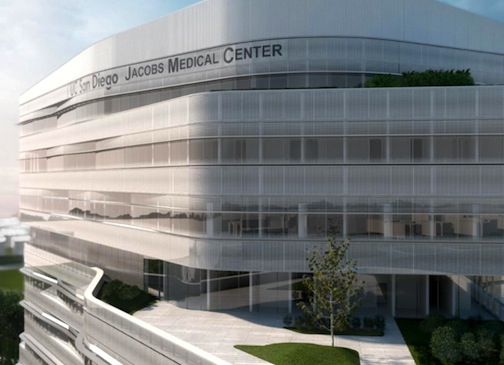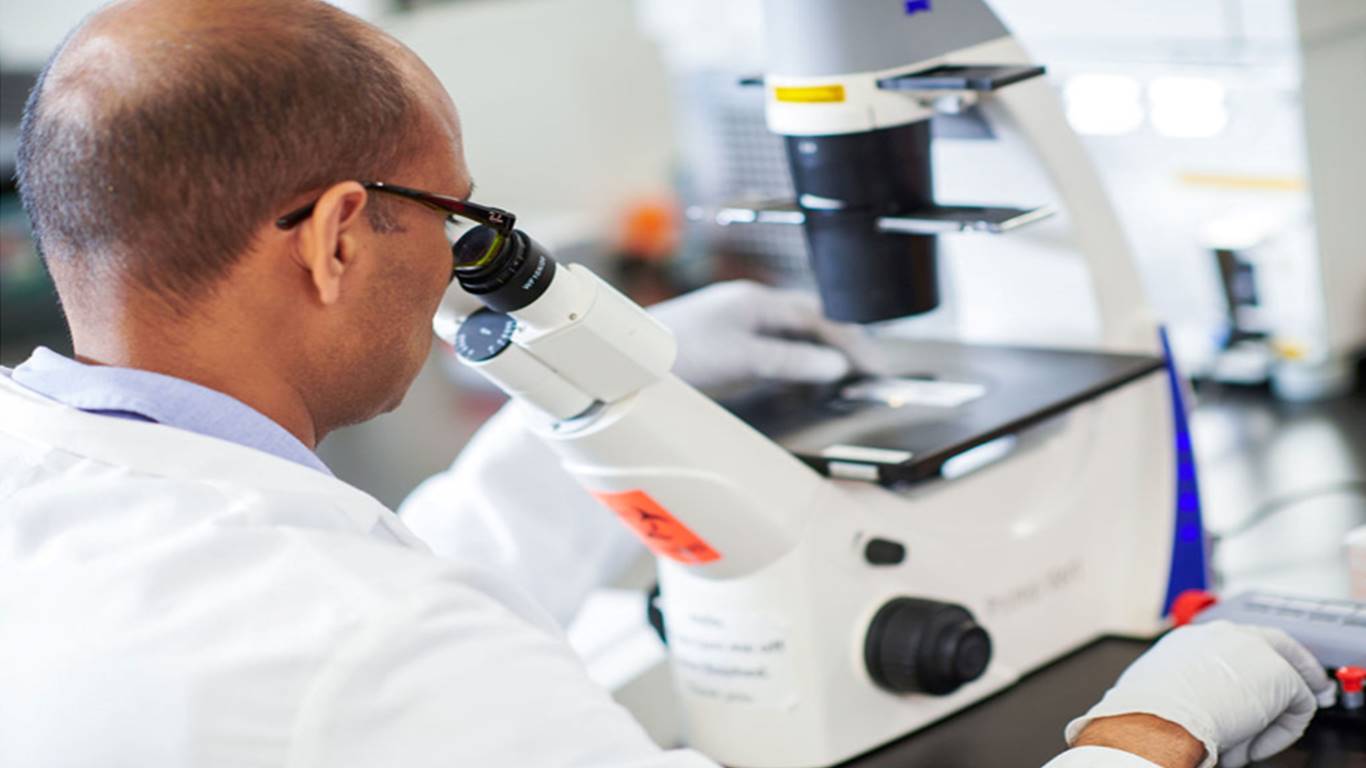Daily Business Report-Oct. 25, 2013
Rendering of the UC San Diego Jacobs Medical Center, scheduled for opening in 2016. The $839 million, 10-story medical center will include three specialized hospitals. It will house 245 patient beds.
UC San Diego Jacobs Medical Center Topped Out
UC San Diego on Thursday celebrated the “topping out” of UC San Diego Jacobs Medical Center, the largest hospital project in Southern California. Chancellor Pradeep K. Khosla also announced a $25 million challenge gift for the project from an anonymous donor. Slated for opening in 2016, the $839 million, 10-story Jacobs Medical Center will include three specialized hospitals: the Hospital for Advanced Surgery, the Hospital for Cancer Care, and the Hospital for Women and Infants. Joan and Irwin Jacobs’ lead gift of $75 million was announced in 2010.
Jacobs Medical Center, part of UC San Diego Health System, will house 245 patient beds. The facility will anchor the La Jolla medical campus, which comprises Thornton Hospital, Moores Cancer Center, Sulpizio Cardiovascular Center, Shiley Eye Center and the under-construction Altman Clinical and Translational Research Institute building, also slated to open in 2016.
City Leaders Outline Projects That Would be
Funded in a Proposed $120 Million Bond Issue
A proposed $120 million bond issue that will go before the City Council in January would include several big-ticket items such as $22 million to improve storm drains, $11.2 million to replace a fire station in City Heights, $8.2 million to replace a fire station in Hillcrest and $4 million toward redoing the Mission Hills/Hillcrest Library, $3 million for the San Ysidro Library and $2.8 million for the Skyline Library.
The library projects each cost a lot more than what’s being allocated in the list of projects, but they are also receiving money from other sources, including previous bond issues.
Street resurfacing accounts for $43.5 million of the money, Interim Mayor Todd Gloria and City Council members Marti Emerald and Mark Kersey said at a news conference Thursday. Kersey’s Infrastructure Committee and the full City Council are scheduled to address infrastructure at meetings on Monday.
— From City News Service
ResMed Acquires Polish Respiratory Equipment Distributor
San Diego-based ResMed, which develops medical products for the treatment of respiratory disorders, has acquired Mediserve, a distributor of equipment used to treat respiratory ailments. Mediserve is based in Warsaw, Poland. “One in four adults stops breathing multiple times throughout the night as a result of mild to severe sleep apnea,” said Tomasz Zarzycki, commercial director for ResMed- Emerging Markets. “Our agreement with Mediserv will allow us to expand our reach to help more of our citizens obtain comfortable and effective treatment for sleep apnea and other respiratory disorders.”
Mediserv will continue to serve its existing patients but, under ResMed’s ownership, will expand its service to include cardiology as well as home care and hospital respiratory care populations. Mediserv is expected to transition to its new name of ResMed-Poland within six months. Fayez Afana, owner and general manager of Mediserv, will be a full-time consultant. Terms of the acquisition were not disclosed.
Illinois Brokerage Acquires G.S. Levine Insurance Services
Arthur J. Gallagher & Co., an Illinois-based insurance brokerage, has acquired G. S. Levine Insurance Services Inc. in San Diego. Terms of the transaction were not disclosed. Established in 1987, G. S. Levine is a retail insurance broker providing property/casualty, employee benefits and risk management insurance services for clients throughout the West. It specializes in placing coverage for the real estate, health care, food processing, manufacturing, technology and financial services industries. Gary Levine, Ross Afsahi and associates will continue to operate in their current San Diego location under the direction of James G. McFarlane, leader of Gallagher’s western retail property/casualty brokerage operations, and Norbert Chung, leader of Gallagher’s western employee benefits brokerage and consulting operations.
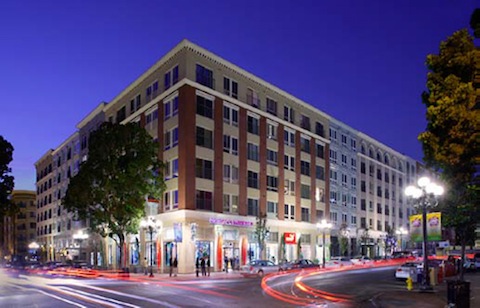
Gaslamp CitySquare Retail Property Sold
Gaslamp CitySquare, a54,773-square-foot retail property in Downtown San Diego’s Gaslamp Quarter, has been sold to a joint venture between Clarion Partners and HP Investors. The seller was Champion Real Estate Cos. Financial details were not disclosed. Located at 430 Fifth Ave., Gaslamp CitySquare was completed in 2004 and 2006 and is part of a larger, mixed-use project that includes 223 residential units (not included in the transaction). Tenants include The Oceanaire, Bice Ristorante, Puma, Quiksilver, Skechers and Oakley. HFF arranged for the sale and financing of the property.
San Diego Aging in Place Chapter is Formed
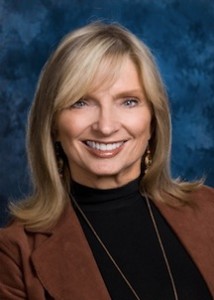
Mortgage industry veteran Colleen Moore has been named chairperson of the first San Diego chapter of the National Aging in Place Council. Based in Washington, D.C., the National Aging in Place Council works to provide the resources, information and tools needed to ensure seniors are able to remain in their homes as long as they would like. Moore is national reverse mortgage director at Golden Equity Mortgage. The new San Diego chapter will host informational events and seminars for local seniors and their families, as well as offer a database of support services and resources for things such as adult day care, financial planning, accessibility consultants, health care and more.
The San Diego chapter is encouraging local businesses and ancillary groups affiliated with the aging population in San Diego to join the organization. Groups and individuals can contact the local chapter by contacting Moore directly at (858) 634-1200.
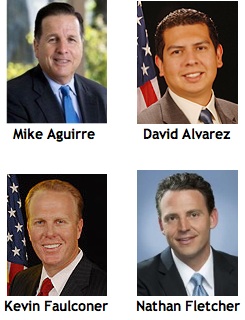
Mayoral Debate Set for Oct. 30
A debate between the top four candidates for San Diego mayor is set for Wednesday, Oct. 30, under sponsorship of the San Diego County Taxpayers Association. The luncheon event will be from noon to 2 p.m. at the Wyndham San Diego Bayside hotel, 1355 North Harbor Drive, in Downtown San Diego. Candidates are San Diego Councilmen David Alvarez and Kevin Faulconer, former Assemblyman Nathan Fletcher and former City Attorney Mike Aguirre. Admission is $40 for members of the taxpayers group and $50 for nonmembers. For more, contact Jenna Harris at jenna@sdcta.org.
El Cajon Mayor Announces Resignation
EL CAJON — Longtime El Cajon Mayor Mark Lewis has resigned amid accusations that he made prejudicial comments about the East County city’s large Chaldean community, it was reported Friday. Lewis, who has been mayor since 1998, resigned for “health reason” in a letter sent to U-T San Diego Thursday night, according to the newspaper, which said Lewis pointed to a minor stroke in 2010, cancer and a dislocated shoulder. It was unclear when the resignation would take effect.
Another letter from the mayor was posted on El Cajon’s website earlier Thursday. In it, Lewis made no mention of resigning but he does apologize to anyone he offended and says he did not intend his remarks to be insensitive.
— KPBS report
TECHNOLOGY
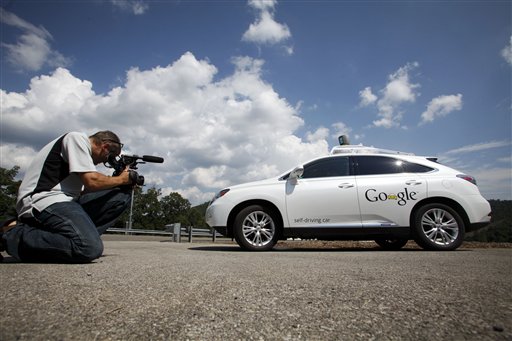
Leaving the Driving to a Computer Has Big Benefits
WASHINGTON (AP) — In some ways, computers make ideal drivers: They don’t drink and then climb behind the wheel. They don’t do drugs, get distracted, fall asleep, run red lights or tailgate. And their reaction times are quicker.
They do such a good job, in fact, that a new study says self-driving cars and trucks hold the potential to transform driving by eliminating the majority of traffic deaths, significantly reducing congestion and providing tens of billions of dollars in economic benefits.
But significant hurdles to widespread use of self-driving cars remain, the most important of which is likely to be cost. Added sensors, software, engineering and power and computing requirements currently tally over $100,000 per vehicle, clearly unaffordable for most people, the study said. But large-scale production “promises greater affordability over time,” it concluded.
Questions also remain about public acceptance, liability in event of an accident, and the ability of automakers to prevent car computers from being hacked.
Nevertheless, the advantages of self-driving cars are such that if only 10 percent of cars and trucks on the road were self-driving, they could reduce traffic deaths by 1,000 per year and produce nearly $38 billion in economic and other savings, said the study by the Eno Center for Transportation, a foundation dedicated to improving transportation.
If 90 percent of vehicles were self-driving, as many as 21,700 lives per year could be saved, and economic and other benefits could reach a staggering $447 billion, said the study, a copy of which was provided to The Associated Press.
“There will be many steps before we get to that, but it does feel like there is a whole new world that completely changes everything in terms of our perspective on driving that could emerge eventually,” said Joshua Schank, Eno’s president and CEO.
For example, the passenger compartment may be transformed as former drivers safely work on laptops, eat meals, read books, watch movies and call friends. And cars that can be programmed to pick up people, drive them to their destination and then park by themselves may change the lives of the elderly and disabled by providing critical mobility.
Once a critical mass of self-driving cars is on the road, they can start “platooning” — driving closely together but keeping a steady distance between each other without the fuel-burning, time-wasting, stop-and-go typical of traffic congestion. That could smooth traffic flows, reduce commute times and increase highway capacity.

